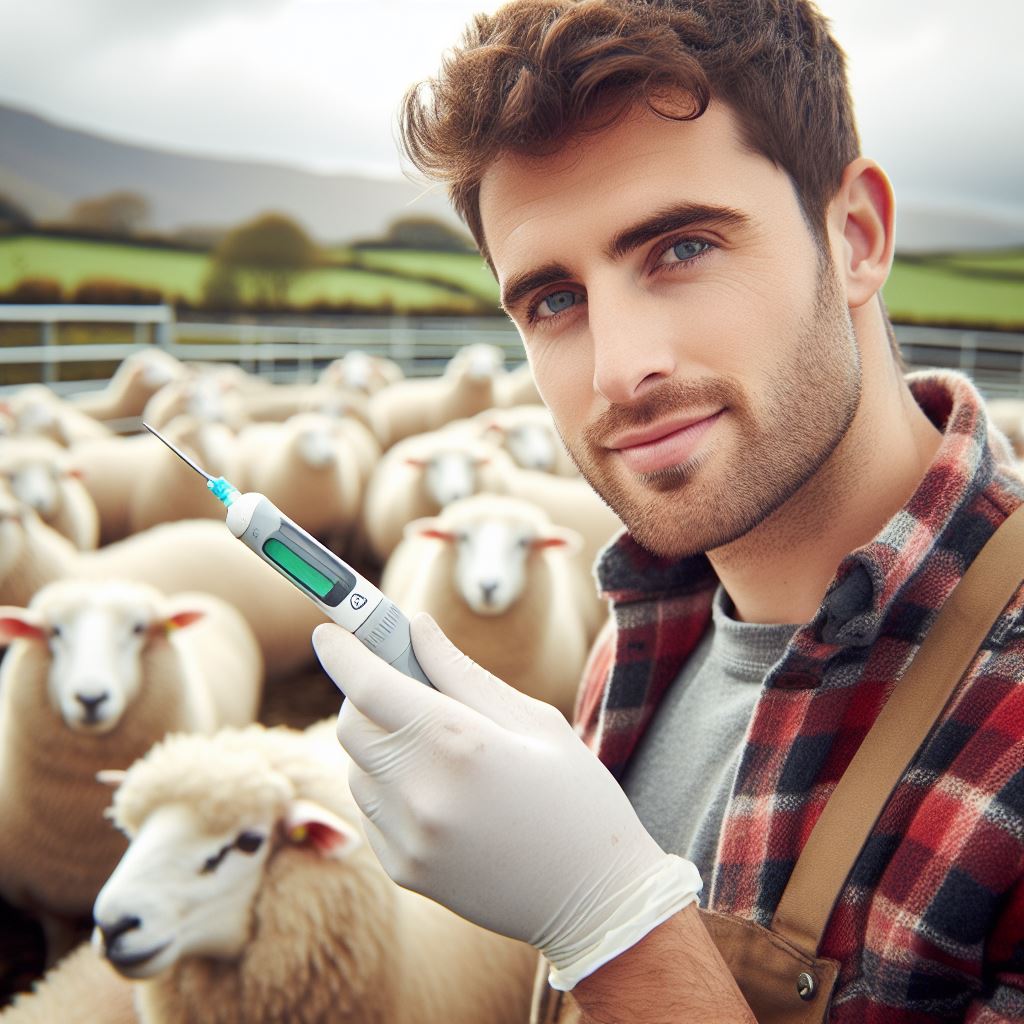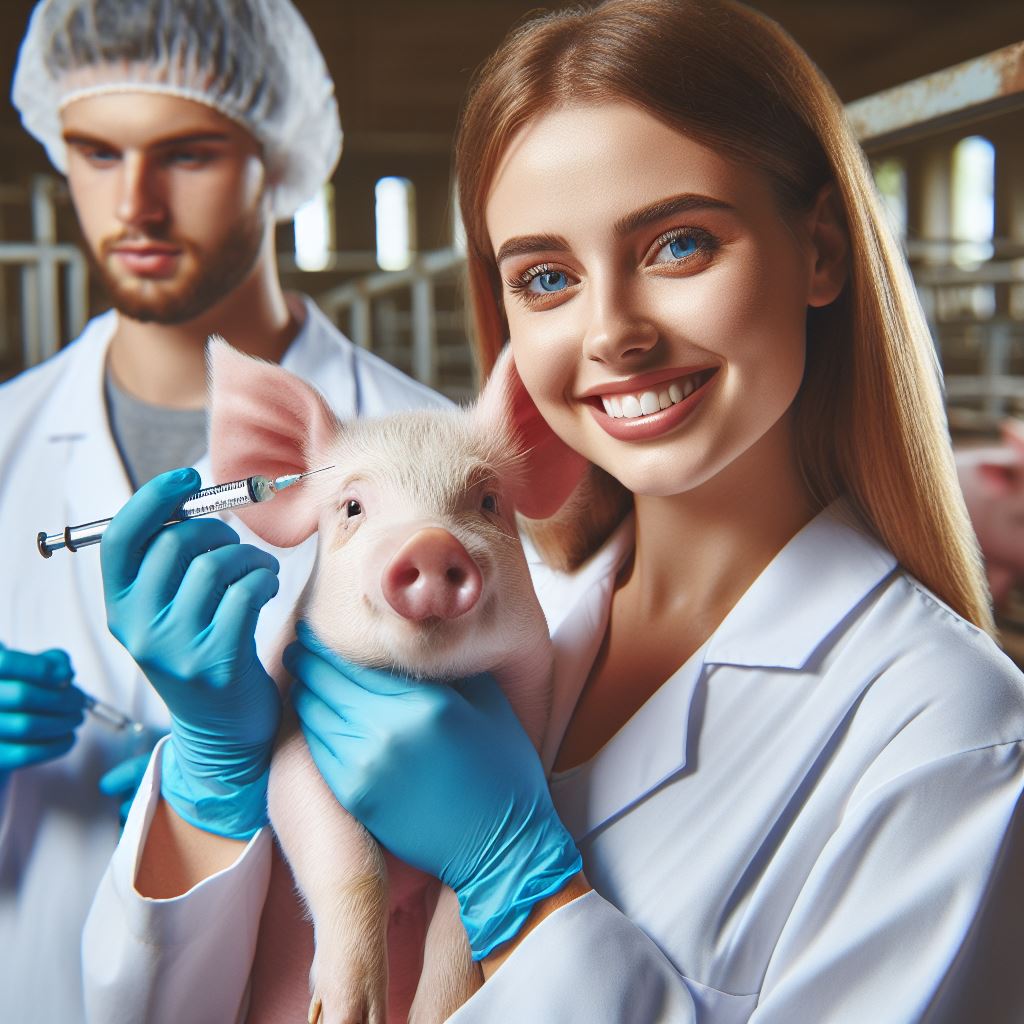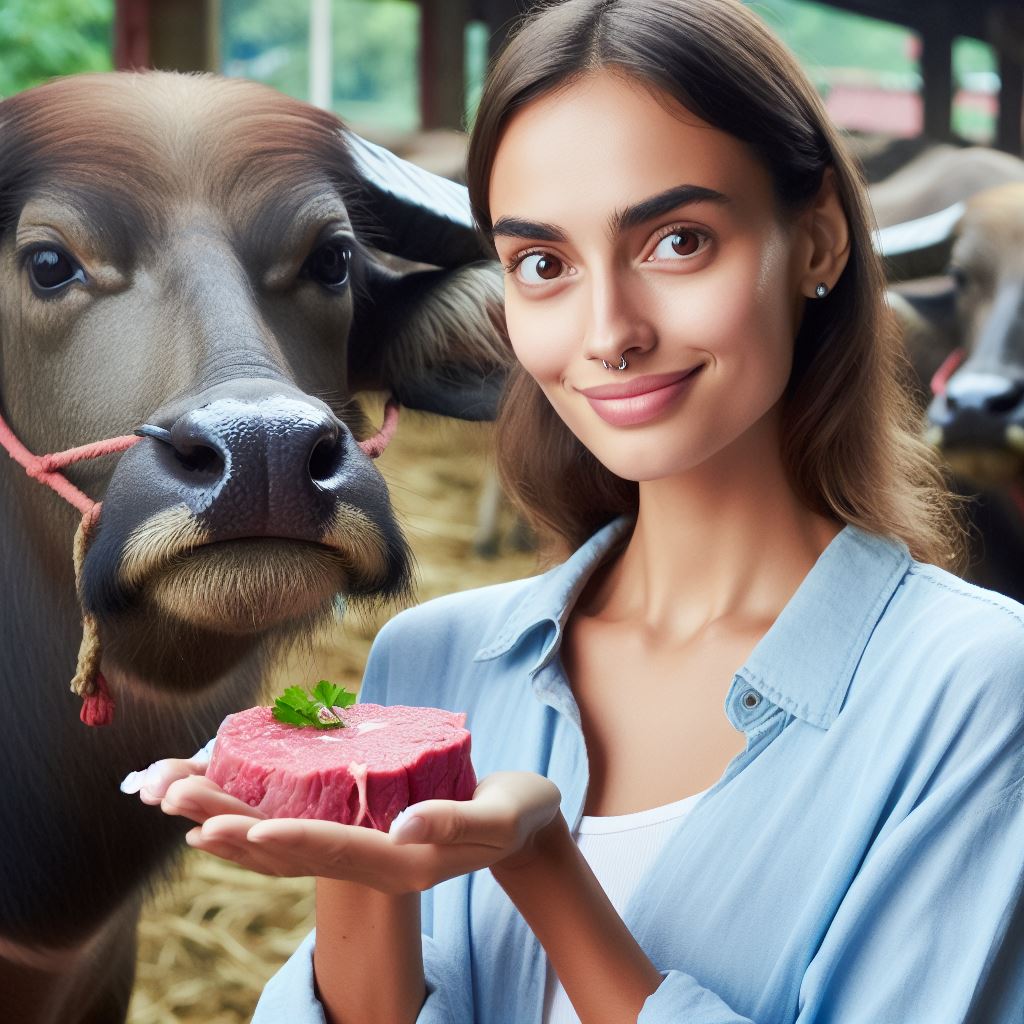Introduction
Let’s explore Key Tips for Effective Cattle Genetic Selection.
Explore the art and science of cattle genetic selection for optimal herd improvement.
Delve into the key considerations and decision-making processes that drive successful genetic selection.
Learn how thoughtful genetic choices can enhance traits like disease resistance, fertility, and overall productivity.
Understand the economic implications of effective genetic selection, impacting your bottom line positively.
Embrace the latest technologies facilitating precise genetic evaluation, ensuring a modern and informed approach.
Embark on a journey to master the nuances of cattle genetic selection, where each decision shapes the future of your herd.
Understanding Genetic Selection
Definition of Genetic Selection
Genetic selection refers to the deliberate process of choosing specific traits or characteristics in breeding animals for the purpose of improving the next generation’s genetic makeup.
Genetic selection is a valuable tool that enables cattle breeders to focus on specific traits that enhance productivity, health, profitability, and market demand.
Role of Genetics in Cattle Breeding
Genetics form the foundation of cattle breeding as they determine the inheritance of characteristics, including physical attributes, productivity, and disease resistance.
By understanding and utilizing genetics, breeders can select animals with desired traits, such as high milk production, efficient feed conversion, or superior meat quality.
Genetic information helps identify animals with superior genetic potential and enables breeders to make informed decisions during mating and breeding programs.
Advantages of Effective Genetic Selection
- Improved Herd Productivity: Selecting animals with high milk production, fast growth rates, or other desirable traits enhances overall herd productivity.
- Enhanced Health and Disease Resistance: Genetic selection can significantly improve the overall health and disease resistance of the herd, reducing the need for medications and veterinary interventions.
- Increased Profitability: Effective genetic selection leads to the production of offspring with desirable traits, commanding higher market value and increasing profitability for breeders.
- Reduced Genetic Disorders: By excluding animals with known genetic defects from the breeding program, breeders can reduce the chances of inherited genetic disorders within the herd.
- Targeted Breeding Goals: Genetic selection allows breeders to achieve specific breeding goals, such as improving carcass quality, growth rates, or fertility, leading to more efficient operations.
- Market Demand and Customer Preferences: By matching specific traits to market demands and customer preferences, breeders can ensure their long-term success and profitability.
Therefore, understanding genetic selection is vital for effective cattle breeding.
Genetic selection enables breeders to focus on desirable traits, improving herd productivity, health, profitability, and market demand.
Utilizing genetics empowers cattle breeders to shape the next generation of animals that meet specific goals and customer demands.
Transform Your Agribusiness
Unlock your farm's potential with expert advice tailored to your needs. Get actionable steps that drive real results.
Get StartedRead: Top Tech in Modern Cattle Farming
Factors to Consider in Genetic Selection
When it comes to effective cattle genetic selection, there are several factors that should be considered.
These factors play a crucial role in ensuring that the breeding process yields the desired results and contributes to the overall improvement of the cattle herd.
Breeding objectives and goals
Before embarking on the genetic selection process, it is essential for cattle breeders to clearly establish their breeding objectives and goals.
This involves identifying the specific traits that are desired in the offspring, such as improved size, growth rate, fertility, and temperament.
Once the desired traits have been identified, breeders must prioritize them based on the requirements of their operation.
This allows them to focus on traits that are most important for their specific breeding program and target market.
Breed selection
Researching different cattle breeds is a fundamental step in effective genetic selection.
Understanding the characteristics and capabilities of each breed enables breeders to choose the most suitable one that aligns with their goals and objectives.
Factors such as adaptability to the local environment, resistance to diseases, and product quality should be considered.
After researching different breeds, it is crucial to match the characteristics of the chosen breed with the breeding objectives.
This ensures that the selected breed possesses the necessary genetic traits to produce offspring that meet the desired standards.
Herd performance data
Collecting and analyzing performance records of the cattle herd is vital for effective genetic selection.
Performance data includes information on growth rates, reproductive capabilities, milk production, and general health.
By thoroughly assessing such data, breeders can identify animals with superior genetic potential for passing on desirable traits to future generations.
Regular monitoring and record-keeping enable breeders to track the progress and performance of individual animals and make informed decisions regarding breeding selections and culling.
Genetic evaluations
Understanding and utilizing Expected Progeny Differences (EPDs) is crucial in cattle genetic selection.
EPDs provide estimates of the genetic potential of an animal’s offspring for various traits.
By comparing EPDs, breeders can make informed decisions about which animals to breed, considering the desired traits and the breed’s average performance.
EPDs should be utilized as a tool for decision-making, as they provide valuable information about the probability of certain traits being passed on to the next generation.
Breeders can select animals with higher EPDs for desired traits, thereby increasing the chances of producing offspring with superior genetic potential.
In general, effective cattle genetic selection requires careful consideration of breeding objectives, breed selection, herd performance data, and genetic evaluations.
By implementing these key tips, breeders can improve the genetic quality of their herd and work towards achieving their desired breeding goals.
Read: Effective Breeding Strategies for Beef
Showcase Your Farming Business
Publish your professional farming services profile on our blog for a one-time fee of $200 and reach a dedicated audience of farmers and agribusiness owners.
Publish Your Profile
Implementing Effective Genetic Selection Practices
When it comes to improving the genetic potential of cattle, effective selection practices are crucial.
By actively incorporating key strategies, cattle breeders and producers can enhance the quality of their herds and increase profitability.
In this section, we will discuss vital steps in implementing effective genetic selection practices.
Utilizing artificial insemination (AI)
One of the most powerful techniques in genetic selection is the use of artificial insemination (AI).
With AI, breeders can access high-quality semen from superior sires, significantly expanding the genetic options available for their herds.
Advantages of AI in genetic selection
AI offers numerous advantages over natural breeding. It allows breeders to use semen from genetically superior bulls, even if they are located in distant locations.
This opens up opportunities to access superior genetics that may not be locally available, maximizing the potential for genetic improvement within the herd.
Choosing superior semen based on genetics
Selecting the right semen is crucial in achieving genetic progress.
Breeders should carefully consider the genetics of potential sires, looking for traits that align with their breeding objectives.
By choosing superior semen, breeders can ensure that the desired genetic traits are passed on to the next generation.
Consistency in breeding decisions
Consistency is key when it comes to effective genetic selection.
Breeders should establish clear selection criteria and document their decisions to maintain a focused breeding program.
Documenting selection criteria and decisions
Keeping records of selection criteria and breeding decisions enables breeders to track the progress of their genetic improvement efforts.
It also serves as a reference when making future breeding decisions, ensuring consistency and avoiding deviations from the original breeding objectives.
Avoiding impulse purchases or deviations from breeding objectives
Breeders should resist the temptation of making impulse purchases or getting swayed by trends that steer away from their breeding objectives.
Sticking to a well-defined breeding plan is crucial to achieving long-term genetic improvement and preventing potential setbacks.
Collaborating with industry experts
Collaborating with industry experts who possess in-depth knowledge and expertise can greatly enhance the success of genetic selection practices.
Consulting with geneticists or breed associations
Geneticists and breed associations can provide valuable insights into genetic selection.
By consulting these experts, breeders can gain a deeper understanding of the underlying principles, best practices, and the latest advancements in genetic improvement.
Seeking advice on genetic improvement strategies
Industry experts can also provide guidance on specific genetic improvement strategies suitable for individual breeding programs.
Their advice can help breeders make informed decisions and optimize the genetic potential of their herds.
Essentially, implementing effective genetic selection practices is essential for cattle breeders and producers looking to improve the quality of their herds and boost profitability.
By utilizing artificial insemination, maintaining consistency in breeding decisions, and collaborating with industry experts, breeders can maximize genetic progress and achieve their breeding objectives.
Read: Cattle Welfare: Ensuring Healthy Lives
Discover More: Pasture Rotation: Benefits and Techniques
Monitoring and Evaluating Genetic Progress
Monitoring and evaluating genetic progress is a vital aspect of cattle genetic selection.
It ensures that breeding strategies are effective, and genetic improvements are being made.
By tracking genetic improvements and adjusting breeding strategies accordingly, cattle producers can continuously enhance the quality and productivity of their herds.
Tracking genetic improvements
Recording offspring performance data is the foundation of monitoring genetic progress.
This data provides valuable information about the traits and characteristics that contribute to superior performance.
By accurately recording data such as weights, growth rates, and reproductive success, cattle producers can measure the impact of genetic selection decisions.
Additionally, comparing genetic gains over generations allows for the assessment of selection strategies.
It enables producers to evaluate the progress made in improving desired traits and identify any areas of potential improvement or adjustment.
By analyzing genetic gains over time, producers can make informed decisions about which breeding animals to select to maximize genetic progress.
Adjusting breeding strategies accordingly
As operation goals evolve, it is crucial for cattle producers to adapt their genetic selection priorities accordingly.
Priorities may shift based on market demands, changes in consumer preferences, or advancements in breeding technologies.
Adapting selection priorities ensures that the breeding program remains aligned with the operation’s goals and optimizes genetic progress.
Incorporating new genetic technologies or advancements further enhances breeding strategies.
Technologies such as genotyping and genomic selection allow for the identification and selection of animals with desirable genetic traits at an early age.
By utilizing these technologies, breeders can accelerate genetic progress and make more informed breeding decisions.
Showcase Your Farming Business
Publish your professional farming services profile on our blog for a one-time fee of $200 and reach a dedicated audience of farmers and agribusiness owners.
Publish Your ProfileOverall, monitoring and evaluating genetic progress are essential for effective cattle genetic selection.
By tracking genetic improvements through the recording of offspring performance data and comparing gains over generations, producers can assess the effectiveness of their selection strategies.
Additionally, adjusting breeding strategies according to evolving operation goals and incorporating new genetic technologies ensures continuous improvement in cattle genetics.
By actively monitoring and evaluating genetic progress, cattle producers can achieve their breeding objectives and maximize the potential of their herds.
Read: Beef Cattle Nutrition: What Works Best?
Conclusion
Recap of key tips for effective cattle genetic selection
Throughout this section, we have discussed several key tips for effective cattle genetic selection.
These tips include:
- Understanding the desired traits and goals for the breeding program.
- Using performance data and genetic information to make informed decisions.
- Selecting for traits that are economically advantageous.
- Considering the genetic merit of both the male and female animals.
- Maintaining accurate records to track performance and genetic progress.
- Utilizing modern technologies and tools for genetic evaluation.
Importance of continuously refining genetic selection practices
It is crucial for cattle breeders to continuously refine their genetic selection practices.
This allows them to adapt to evolving market demands, improve breed quality, and optimize production efficiency.
By staying updated on the latest research and industry trends, breeders can make more informed selection decisions and achieve better outcomes.
Encouragement to apply the outlined strategies for improved cattle breeding outcomes
We strongly encourage cattle breeders to apply the outlined strategies discussed in this section.
By doing so, they can enhance their chances of achieving improved cattle breeding outcomes, such as increased productivity, enhanced profitability, and the production of superior quality animals.
Through diligent genetic selection practices, breeders play a pivotal role in shaping the future of the cattle industry.




